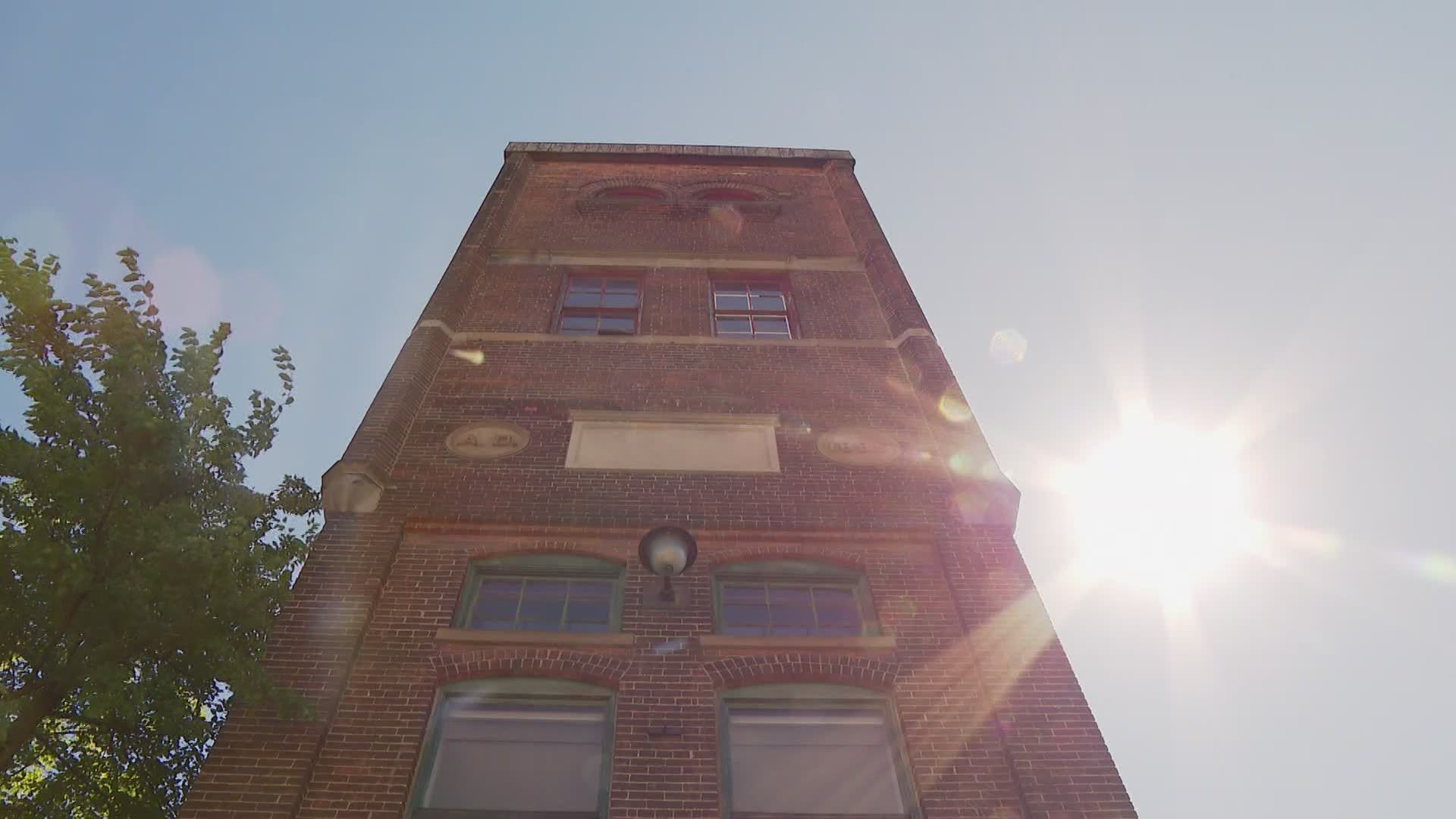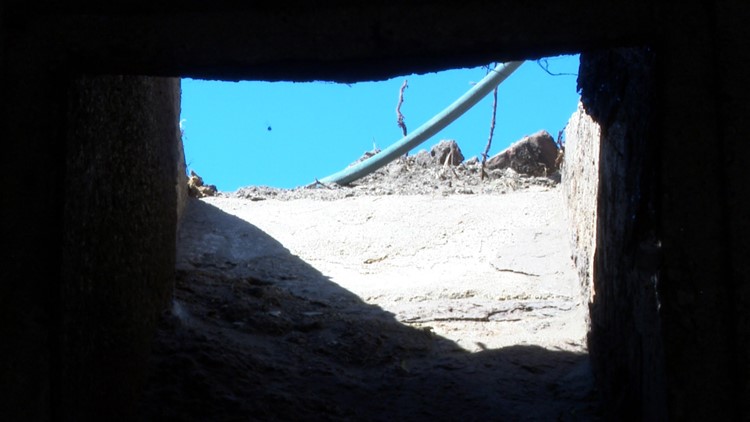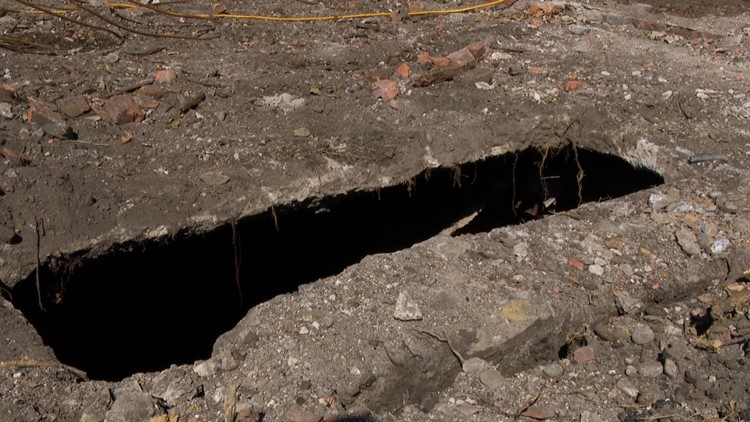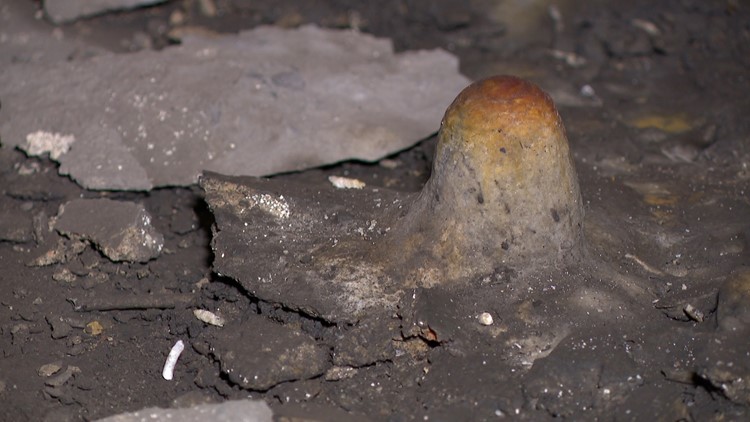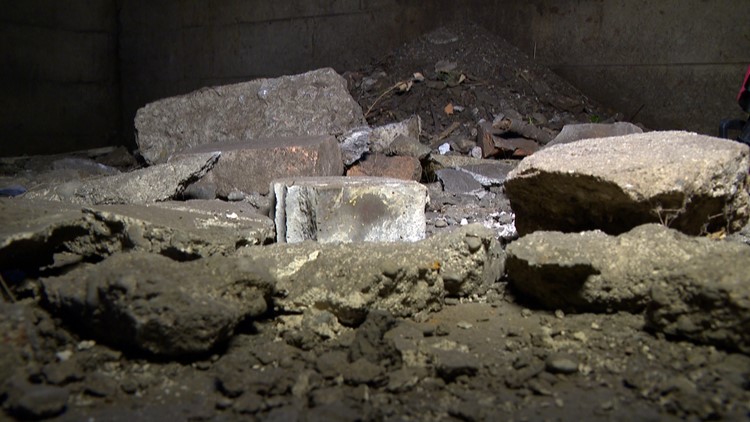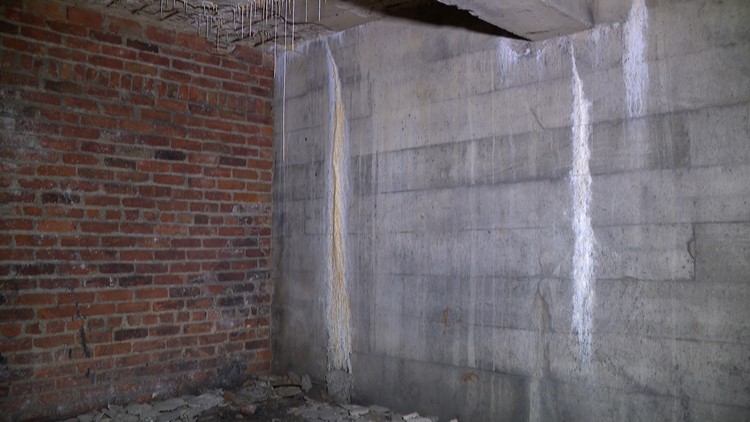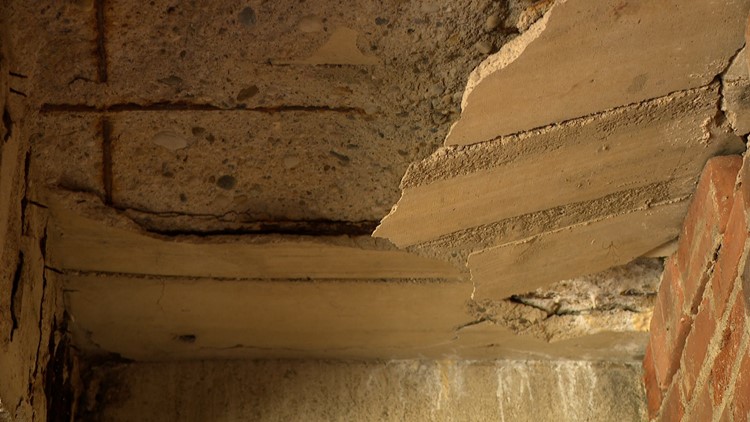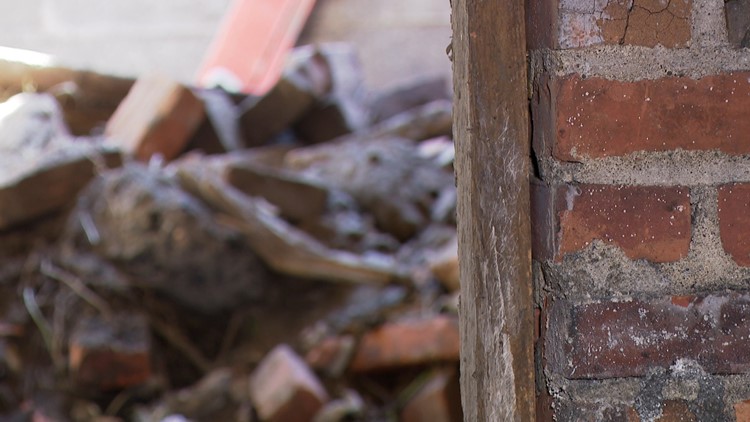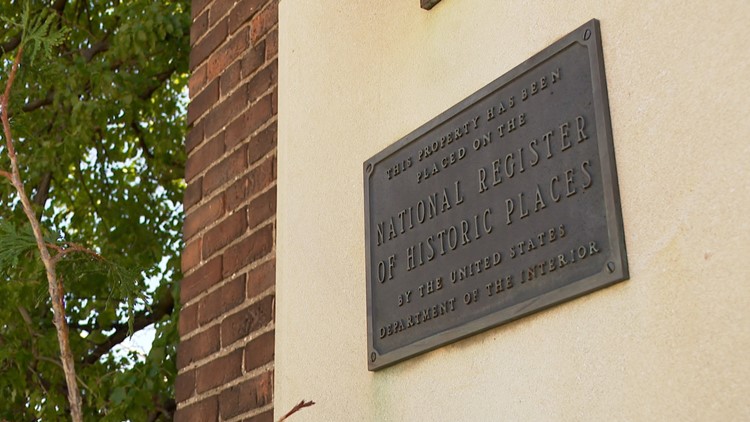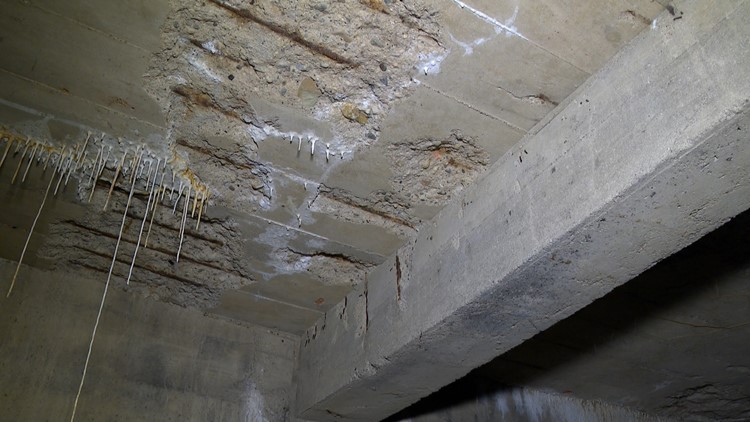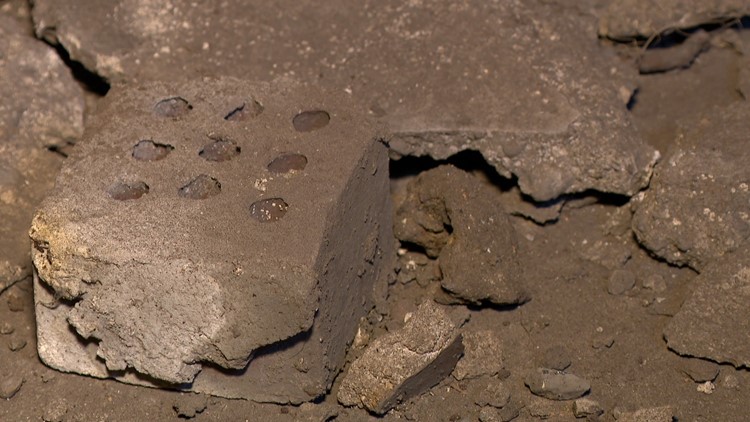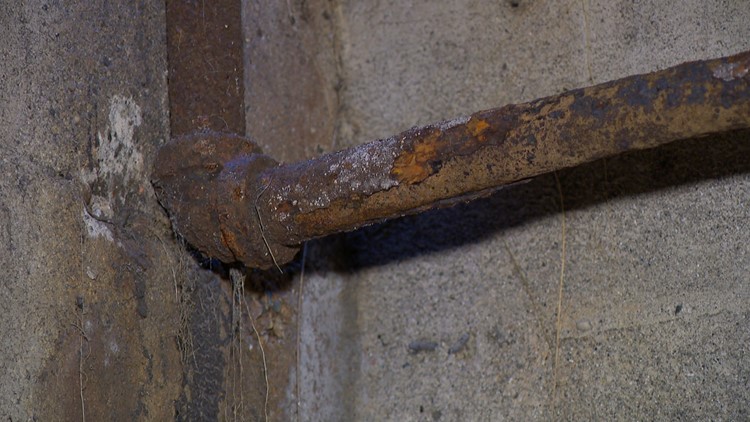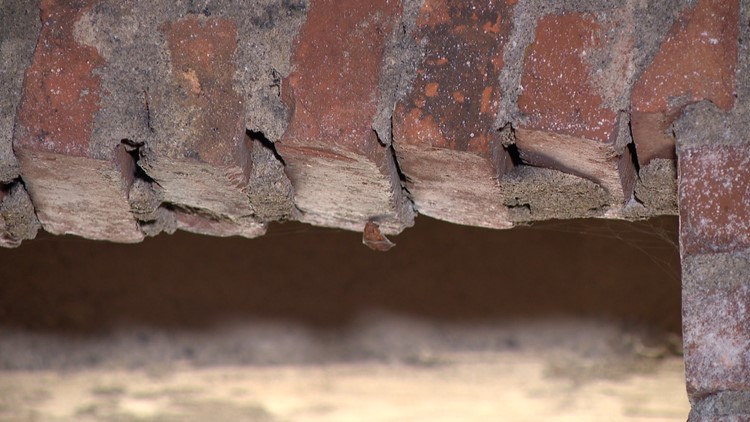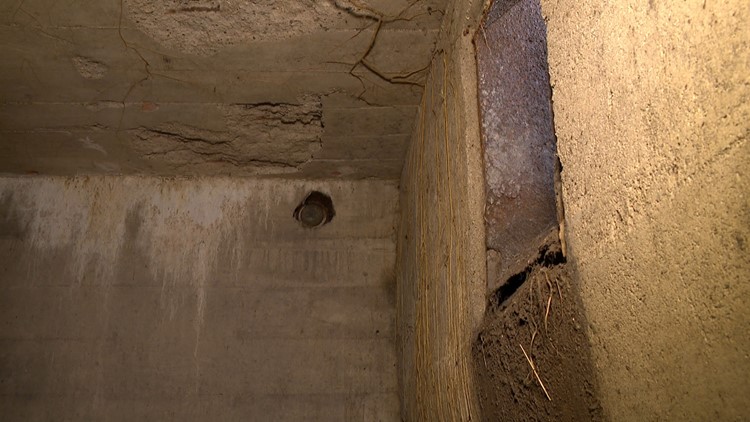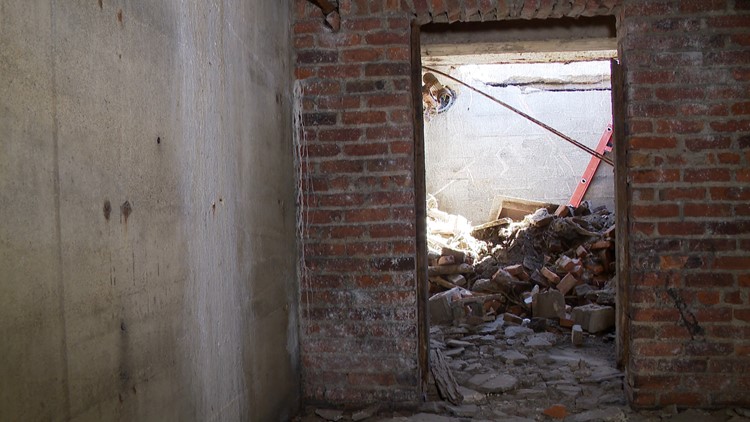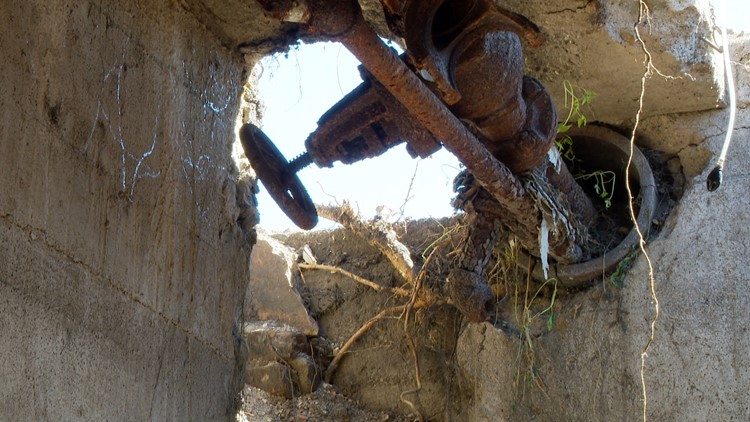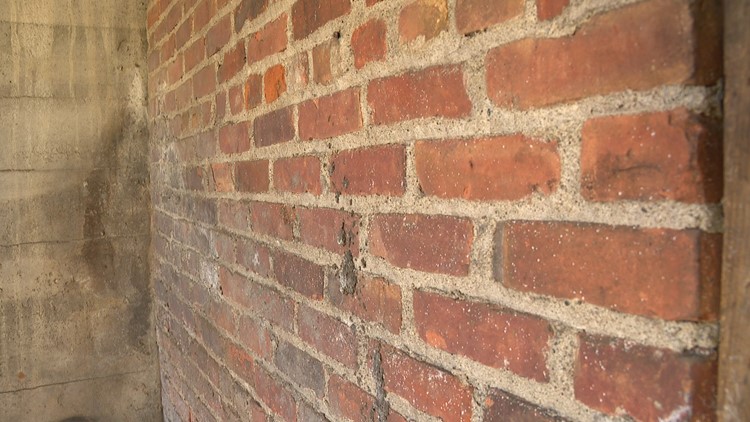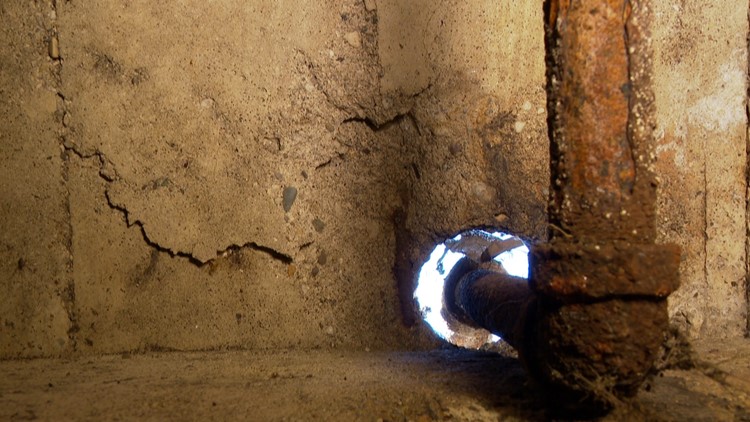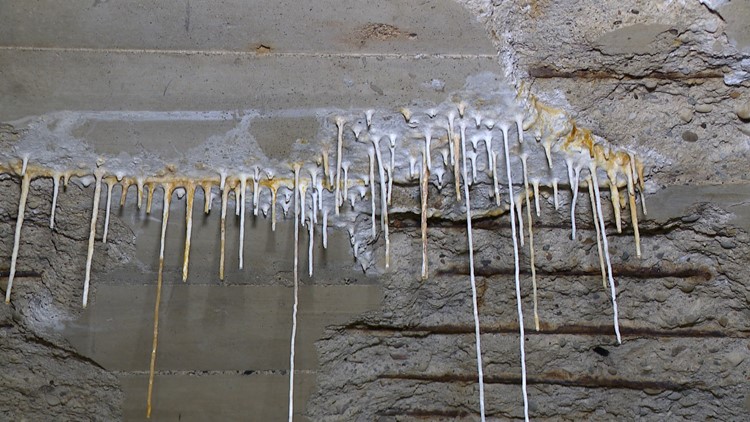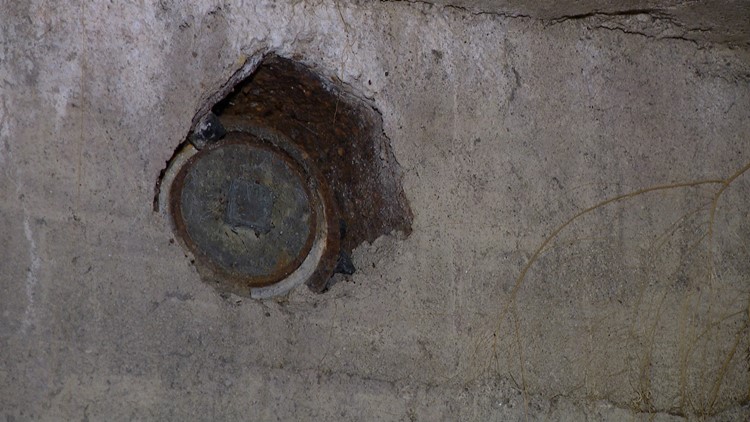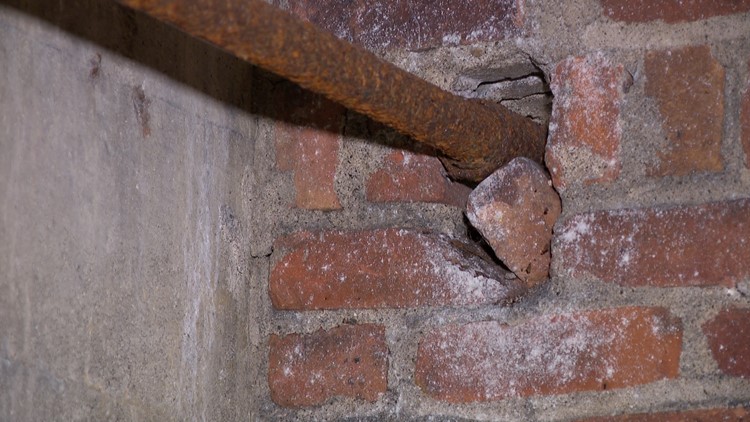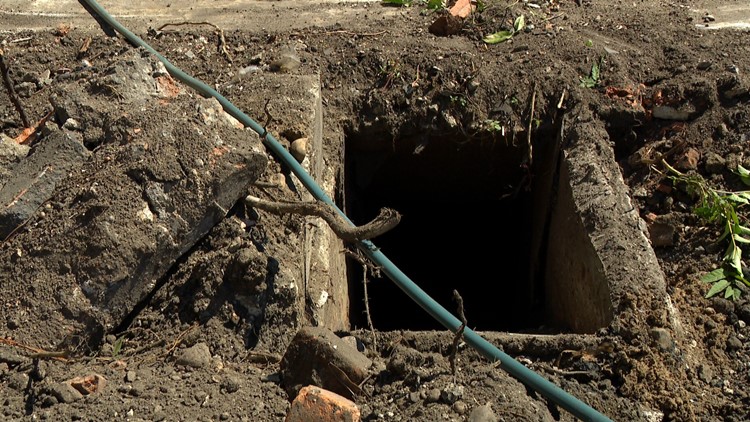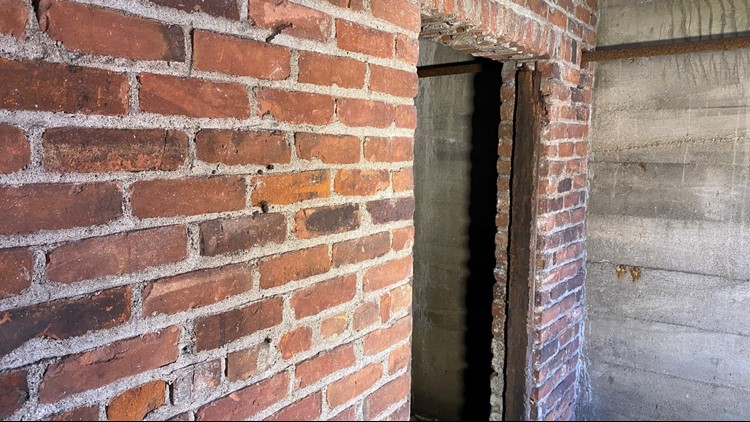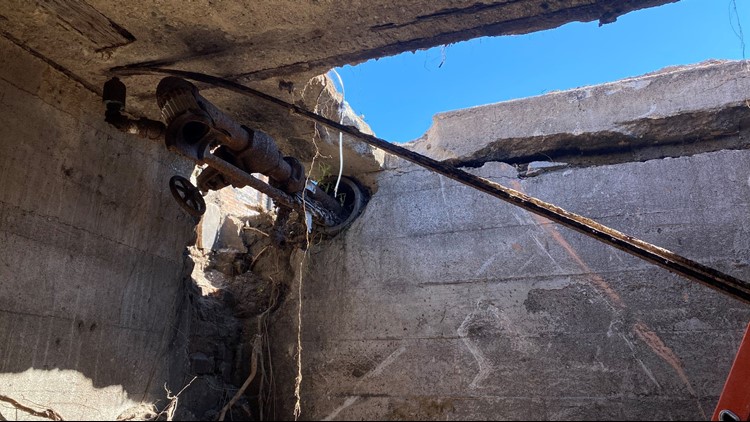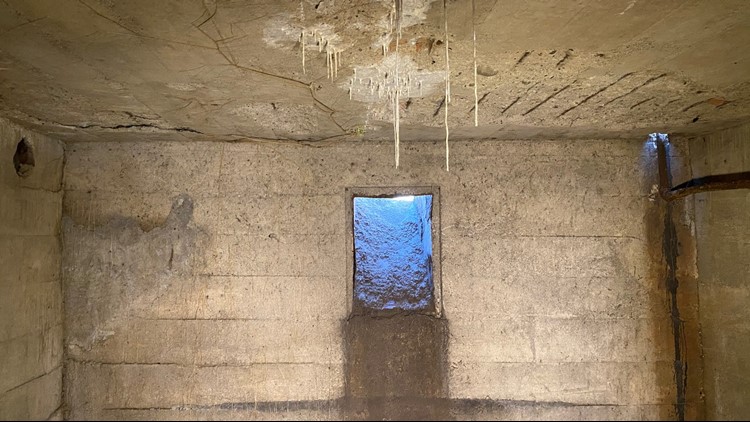JACKSON, Mich. — It was a hot, mid-summer day.
Laurice LaZebnik, who owns the historic Commercial Exchange Building in Jackson, Mi., decided she wanted to have an ugly, overgrown area in back of the building, excavated and cleaned up.

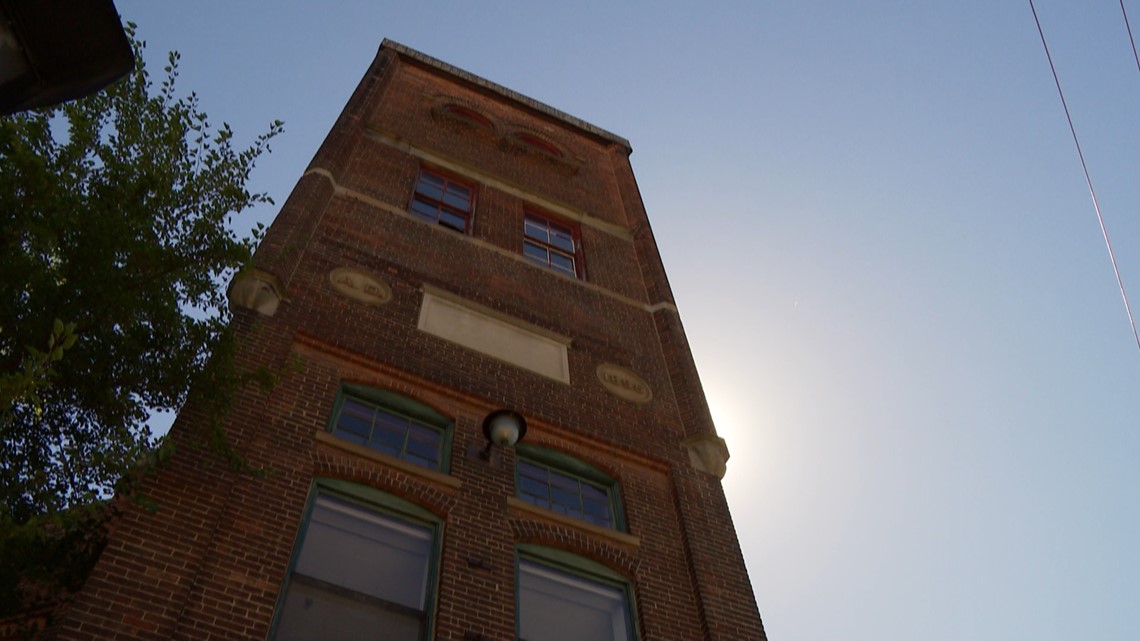
Little did she know that the simple project would unearth something mysterious that had been buried beneath the surface for more than a century.
"It was a mess," said LaZebnik, who has co-owned the building with her husband since 1960. "There were piles of bricks, concrete, dirt and a bunch of trees were growing out of it."
On July 31, workers brought in heavy equipment and began excavating the area. As one of the bulldozers was pushing some of the debris off to the side, one of the tracks fell through the surface and became stuck in a hole.
Nobody was hurt.
Soon after the accident happened, the workers contacted Sharon Buchte, who is the building's operations director.
"They said, "Sharon, you have to get down here,'" said Buchte. "When I got to the scene, the bulldozer was being removed, revealing a giant hole."
As Buchte and the workers got closer, they realized they had discovered something that had been lost to time.
"I got on my radio and told everybody to get down here and see this," said Buchte.
It was a set of underground rooms.
"There were cement walls with a brick wall dividing and a doorway going into a second room," Buchte said.
Buchte then called LaZebnik to let her know what happened and what had been found.
"I had just gotten home, but raced back to work," said LaZebnik. "I know a lot about the history of this building, but knew nothing about this."
Some of the workers decided to drop a ladder in the hole, go down in and take a look around. The first room is 12 x 14 feet and the other is 12 x 17 feet. One of the rooms had a chute leading back up to the surface.
Jackson's mysterious underground rooms
Debris from the discovery had fallen into both rooms, but other than some long stalactites dangling from the ceiling, and some rusty metal pipes, both were empty.
Once the shock and awe surpassed, Buchte and LaZebnik stood over this once-hidden piece of history and began brainstorming what it might have been.
"My mind immediately went to prohibition," said Buchte. "Maybe a cold storage room for the hidden booze, and the chute was used for the ice."
LaZebnik says her mind also drifted toward the prohibition era, but she didn't discard a few other ideas.
"I was hoping we would find Jimmy Hoffa," she joked. "Or maybe the Covenant of the lost Ark, or some gold bricks, but we didn't find any of that."
Soon after the discovery, LaZebnik began reaching out to area historians who might be able to offer their expertise to the mystery.
One of her calls went to the Ella Sharp Museum in Jackson.
"It's super exciting," said Harrison Marcott, who is one of the museum's curators. "We like anything that's mysterious that we can put our thinking caps on and try to figure out what happened."
Marcott's detective work began when he went into the museum's archives and pulled out several old, musty maps of Jackson that were dated all the way back to the 19th century.
"These are extremely detailed maps of urban spaces that were made for insurance companies," added Marcott. "They show year by year changes that were made to the landscape."
The Commercial Exchange Building was built in 1885. It burned completely down in 1895 and it was rebuilt that same year.
Marcott says he's scoured every map, specifically the ones between 1907-1930, where it showed that a structure existed on top of where the secret rooms were discovered.
In all the maps from the 1940s through the 1970s, the structure was gone, leaving Marcott to believe it had been torn down.
"I believe when the above level was removed, the below level wasn't sealed properly," said Marcott. "Over time, it had been covered it until what happened earlier this summer, happened."
Marcott says nobody may ever know for sure what the rooms were used for, but based on the building's history, and what was manufactured there more than a century ago, he's confident in his guess.
"I think the rooms were part of a complex for steam kilns that were used for drying lumber," said Marcott. "Maybe there were heat sources down there that connected to the kilns on the surface."
LaZebnik think's Marcott's hypothesis may be spot on.
"Back in the day, there used to be a rail spur that ran through there," said LaZebnik. "The train would come right up to the building and drop off lumber that would be used to make buggies and cars."
Still, without primary source knowledge, nobody may ever know the truth behind the mystery.
"It's not something that we can just ask the older generation because most of the people from that generation are no longer around," said Buchte.
LaZebnik is hoping that maybe 'citizen sleuths' may be able to help. Maybe somebody's grandfather or great grandfather worked at the building in the early 1900s and can solve the puzzle.
"We're still researching," said Buchte. "If we never get a definitive answer, we'll have to live with that.
"It's just exciting to find a piece of history like this and know that it's been covered up for all those years."
►Make it easy to keep up to date with more stories like this. Download the 13 ON YOUR SIDE app now.
Have a news tip? Email news@13onyourside.com, visit our Facebook page or Twitter. Subscribe to our YouTube channel.

